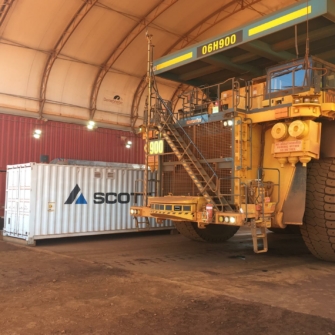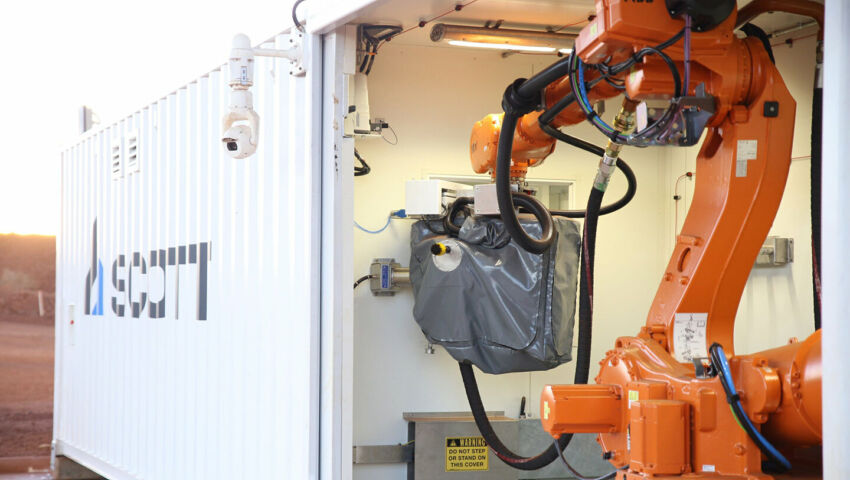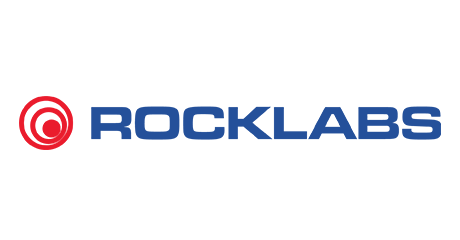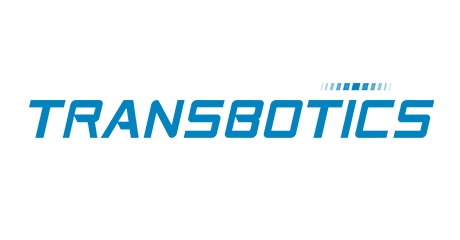Select your region / language
Autonomous truck refueling - the robot revolution

You may have heard of the buzzword Industry 4.0 (also known as the fourth industrial revolution) incorporating cyber-physical systems and the Internet of Things into mines. There’s also an emerging trend in robotics that will drive further efficiencies across operations, namely autonomous truck refueling technology.
Truth is, there are still a number of challenges that exist with current refueling methods. First up, the current process involves a handful of risks to staff who are working around the truck’s wheel base (where there can be potential fuel spillages). Manual fuel stations are also generally located a long distance from the mining pit, meaning there can be up to an hour a day in lost production time—bad news for miners that are working around the clock to meet their production guidance.
It is clear autonomous truck refueling is the next natural step in the automation chain to add even more value to an operation.
Autonomous Truck Refueling: How it works
In a nutshell, autonomous truck refueling technology involves a robotic arm that removes the manual aspect of hooking up a truck to a diesel tank to refuel. The good news is that the technology is already readily available.
There are a small group of innovators, both here and abroad, that have pioneered solutions for existing autonomous haulage systems.
Australian-based Scott is one example. The technology company has developed Robofuel; an automated refueling system that can be paired with an ABB or KUKA robots and self bunded fuel storage tanks to remove the manual aspect of refueling. Robofuel uses an innovative vision sensing and detection system to locate the position and orientation of the truck’s fuel tank.
“This information is used to couple the fuel nozzle with the tank. Fuel spillages are minimised through the controlled coupling and pumping, mitigating the risk of environmental contamination,” Scott said.
Robofuel is suited to all commercial fuel nozzles and receivers with no additional equipment required on the vehicle.
Robofuel has been proven to increase productive hours and the efficiency of trucks, all while reducing on-site costs. And, if you’re not already convinced, in 2016 the technology was nominated as a finalist in the Australian Mining Prospect Awards in the Innovative Mining Solution category alongside heavyweights such as Caterpillar, Komatsu, and Enerpac.
Productivity Gains, Reduced Risk:
According to McKinsey & Company the deployment of data analytics, robotics, and other technologies will unlock between $290 billion and $390 billion in annual savings for producers in 2035. Autonomous truck refueling technology will be one of the key contributors to these cost savings and is now being trialed and tested across mine sites globally.
The Benefits of Autonomous Truck Refueling
- Increased productivity and cost savings with refueling stations located closer to mining activities, enabling trucks to complete one additional cycle per shift.
- Ability to refuel without local operators coming in contact with live autonomous vehicles.
- Safer working environment.
- Minimised spillages and exposure to hazardous liquids.
- Greater refueling speeds of up to 300GPM.
- Flexibility: stations can easily be relocated and hooked up with fuel farms or mobile tankers.
- Reliability through climate control and ingress protection systems.
- Easy to operate and monitor for drivers, and fully automated for autonomous trucks.
Just ask the team at Gina Rinehart’s $10 billion Roy Hill mine in the Pilbara. The mine has been testing an in-pit robotic refueling device at the project since 2016.
“The truck drives up to the device and a robot opens the door of the sea container,” Roy Hill chief executive Barry Fitzgerald told The Australian Financial Review.
“It then undoes the fuel cap, connects the fuel hose and fills the truck. We see some timing benefits in the sense it can fuel trucks at about a third of the time, also occupational health and safety issues in not handling the hoses, and it gives us greater flexibility to move it around the pit. “My view about autonomy and robotics is that it is a fact of the way of the future.”
Integrating autonomous truck refueling with your existing system
You’re now familiar with the benefits, but how do you introduce a new system like this into your existing operation?
It’s really quite a simple process. One of these bad boys can be bolted into an existing flexible fuel storage system, like our self-bunded tanks. In fact, we have been supplying self bunded tanks to the mining sector for years.
Article written by FES TEAM on 22-06-2018
Robofuel in action
Robotic refuelling
Scott Robotic refuelling eliminates human risk by removing the need for manned fuel tanks. By removing the manning requirement, Robofuel can be placed “on the circuit” or even “in-pit” allowing for a significant reduction in time dedicated to and from fuel stations.











